Quietly existing in the northwest of Beijing, China, is an ancient village that dates back to the Ming Dynasty, with an exceptionally unique name: Thuan De Xia Village.
Thuan De Xia Village holds the marks of ancient history and is a favorite spot for international students in Beijing who wish to learn more about Chinese culture and its past.
Thuan De Xia – A Name Filled with Aspirations of Its Inhabitants
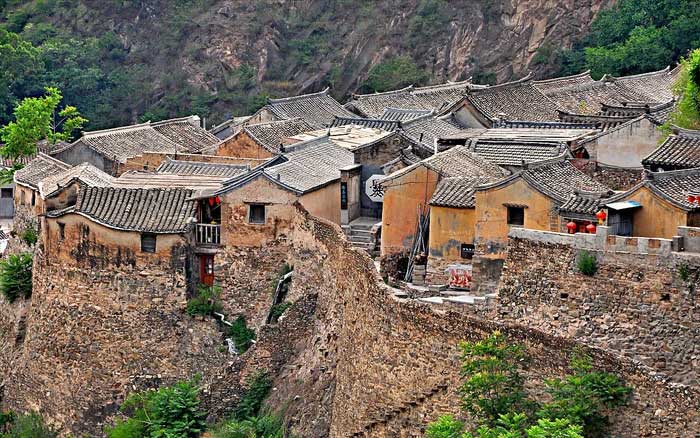
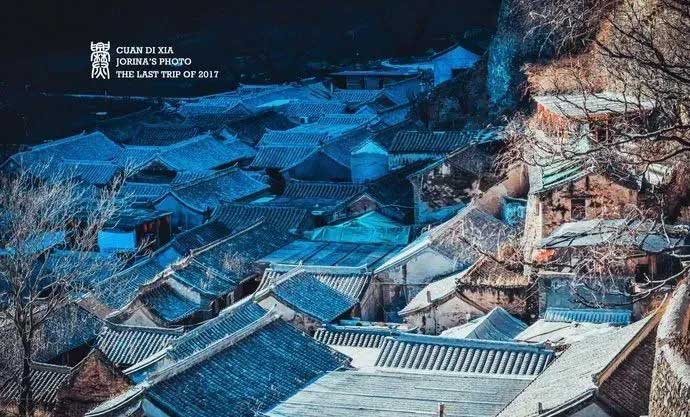
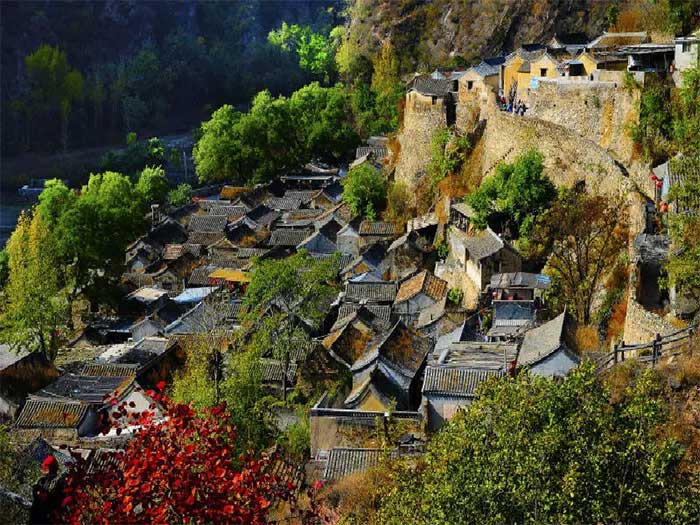
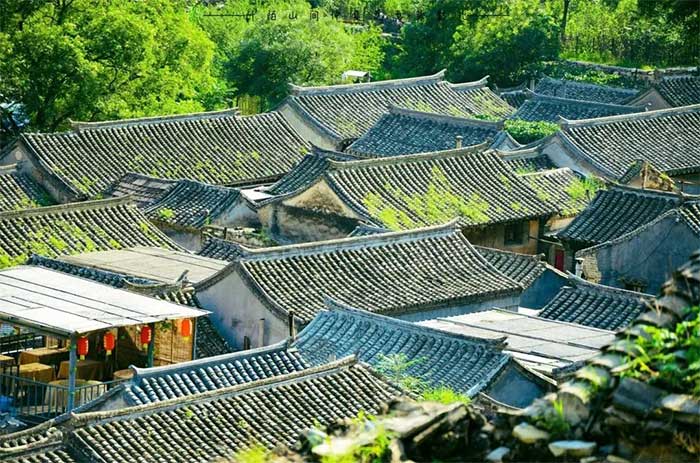
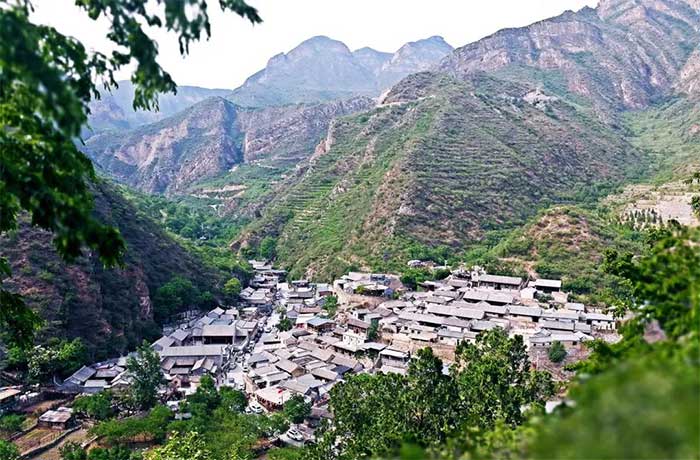
Thuan De Xia Village.
Thuan De Xia Village is nestled among the Taihang Mountains, standing over 650 meters above sea level, covering an area of approximately 5.33 hectares. It was established during the Ming Dynasty and renovated during the Qing Dynasty.
According to the village elders, most villagers in Thuan De Xia share the surname Han, which sounds like the word for “cold” in Chinese, symbolizing the harsh winter. The villagers named their village in this manner to escape the bitter cold of winter.
“Thuan” in the Chinese pictogram system has two meanings: one being “to gather firewood for cooking,” and the other “stove.” The villagers believe that the character “Thuan” contains the character “huo” (fire), which can provide warmth and drive out the cold, helping the Han people to thrive and prosper.

The character “Thuan” is carved at the village entrance and on the walls of houses.
However, this is merely a folklore tale among the villagers of Thuan De Xia. According to historical records, Thuan De Xia Village is located south of a Ming Dynasty military area known as “Thuan Li Kou”, which is how it got its name.
Since the 14th year of the Zhengde era during the Ming Dynasty (1519), Thuan De Xia Village flourished due to its position on a military transport route connecting Hebei, Shanxi, and Inner Mongolia. By the Qing Dynasty, as military routes lost their significance, the village became a commercial hub between Beijing and northwestern China.
During the Kangxi and Qianlong eras of the Qing Dynasty, Thuan De Xia Village experienced significant economic growth, with 6 out of every 10 households engaging in trade and 3-4 households providing transport services using donkeys and horses.
An Old Corner Amidst Mountains and the Edge of a Modern City
As times changed, Thuan De Xia Village ceased to be a bustling trade point, becoming quieter and seemingly forgotten by modernity. By the late 20th century, riding the wave of reform, Thuan De Xia Village promoted tourism, becoming a valuable location attracting film crews, leading to the production of numerous famous historical and contemporary films.
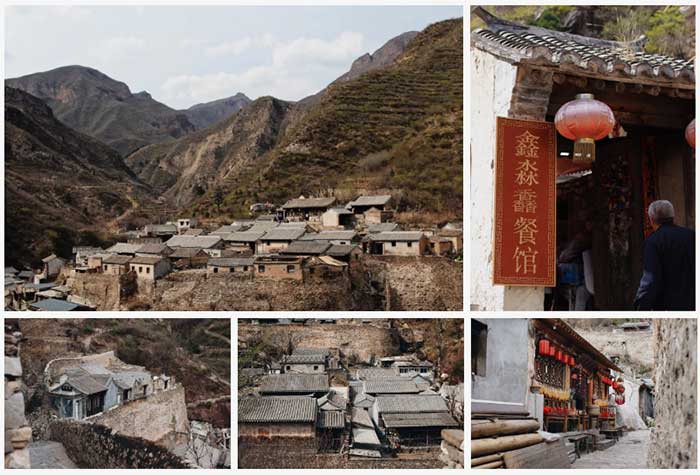
The village has 74 households and 689 houses with a tight layout and structure.
Today, Thuan De Xia Village remains intact as it was originally, with the daily lives of its residents continuing in a normal rhythm. The village comprises 74 households and 689 houses, all with a cohesive layout and structure, with no new constructions. As a result, the ancient houses here are referred to as the “Gems of Ancient Chinese Architecture” due to their significant contributions to the study of ancient architecture.
Thuan De Xia Village is compact, with clustered houses, making it easy to explore without taking too much time. Visitors are sure to be captivated by the remnants of history that fill the village, appealing to those who love the imagery of ancient towns steeped in history.

Simple and rustic dishes.
After a tiring day of exploration, it’s time to eat. Here, there are no lavish delicacies, only simple local dishes. You can sit in the courtyard of what appears to be just an ordinary old house, with a wooden table in front, ordering a few dishes like spring onion omelet, large pot of slow-cooked noodles with meat, or braised fish in chili sauce… Simple, yet incredibly satisfying!
The village features a temple for Guan Gong to pray for wealth, a temple for Niang Niang to pray for children, and a temple for Guanyin to pray for peace…
You can stand on the slope of Jintian Mountain to get a panoramic view of Thuan De Xia Village. This is also a popular spot for young people to take pictures, enjoying the breeze while reflecting on a piece of historical past.
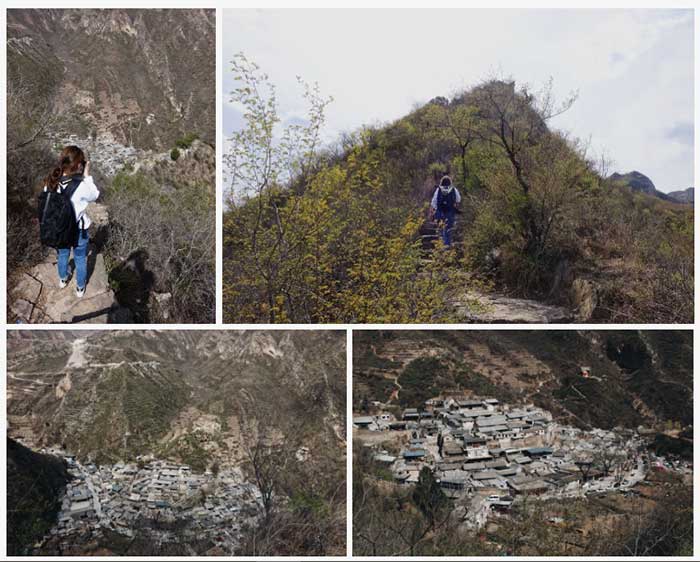
A panoramic view of Thuan De Xia Village


















































